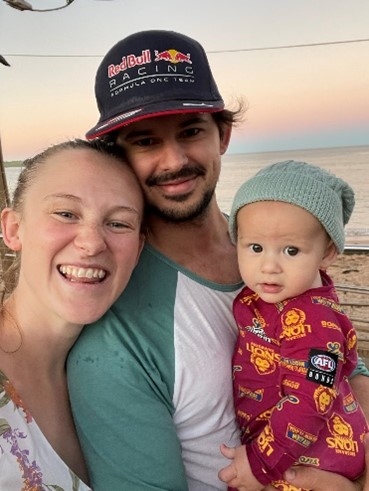In June 2004, John Holland became the nation’s first major construction contractor to introduce paid parental leave. Twenty years and a few policy tweaks later, men make up 42% of all parental leave taken.
It’s an astounding statistic, when you consider just 13% of parental leave in Australia is taken by men.
It’s even more staggering when you take into account the predominance of men in the construction industry.
Construction is ranked number two, behind mining, as one of the most male-dominated sectors in the nation.
Women represent 51% of the national workforce. But in construction, in 2022 women were just 12% of the construction workforce.
A majority of those women are employed in lower paying or non-manager roles. In 2022, women were just 6% of CEOs. This compares to 22.3% across all industries. At no level of management are women more than 22% of employees.
Gender imbalance, such as that seen in the construction industry, is one of the main drivers of the gender pay gap. Although every industry in Australia has a gender pay gap that favours men, construction has the highest - a gap of 29% between the average earnings of women and men.
It means that for every $1 a man working in construction earns, on average, a woman will earn 71 cents.
In a such a blokey environment, parental leave is often less likely to be a priority. But John Holland believed it could play a key role in addressing discriminatory gender norms and stereotypes that still exist in Australia by ensuring that flexible work and parental leave arrangements were equally available and utilised by all employees.
The parental leave policy men love
Initially, John Holland’s parental leave scheme offered 13 weeks of leave to female employees while men received one week.
As the policy matured, the company refined the offering.
Today, John Holland offers 18 weeks of paid primary carer’s leave, regardless of gender, and three weeks of secondary carer’s leave. There’s no minimum employment period for permanent employees to be eligible for this leave.
Employees also continue to receive superannuation payments while on paid or unpaid leave for 18 weeks. This change has immediately addressed the superannuation savings gap carer’s (particularly women) face in retirement due to time out of the workforce or the cumulative impact of reduced lifetime earnings.
A decision to remove gender roles and allow any parent, male or female, to take paid leave as primary carer saw the number of men taking parental leave jump significantly.
In 2022, 35 men took up primary carer’s leave, compared to just six in 2021. This means more than 2 in 5 employees (42%) taking parental leave at John Holland are men.
Tried and tested: The employee reaction
Ryan Caetano is a Senior Project Engineer at John Holland. He has been with the company for almost four years and recently became a dad for the first time.
When Ryan returned to work after an initial short period of leave, the new parental leave policy paved the way for a further 20 weeks’ leave, including 18 weeks as the primary carer. It meant Ryan could make the most of quality time with his child in the first few months of life.
It also changed his mindset by giving him the opportunity to gain the confidence and skills to look after his own child as a primary carer, which in turn supported his partner to return to work.
Ryan says the time at home allowed him to reconnect with his family: “it was really key for our relationship, my wellbeing, and my attitude towards my work and home life. I think until you actually take on the full responsibility of being a primary caregiver, it’s difficult to fully appreciate the scope of what’s involved.”
Michael Wade took up work as a Project Engineer with John Holland in 2021. He recently welcomed his new baby girl with his partner who also works in the construction industry. Access to supportive parental leave has meant they can share the parenting responsibilities.
Michael starts his leave once his partner must return to work, with a total of 26 weeks: a combination of 18 weeks of paid parental leave plus a further eight weeks of leave without pay, which now includes superannuation.
Michael says: “Both my partner and I work in construction and are supportive of each other’s careers and the demands that brings. The updated policy is a fantastic opportunity to support all parents in being equally engaged with their children. I hope we can dismantle the outdated belief that it’s a woman’s role to be the primary carer of children and a man’s role to provide for the family.”
The problem with female-focussed parental leave policies
In Australia, still, 87% of primary carer’s leave is taken by women.
Aside from gender segregation, one of the major drivers is family and caring, and workforce participation.
When women are required to take time out of the workforce or to go casual or part-time for caring or family responsibilities, there can be lifelong consequences.
It can slow career progression, particularly where management roles are only offered full-time, it can limit lifetime earnings and superannuation savings, or prevent choice to change jobs if a prospective employer has long eligibility periods for parental leave.
The good news for men seeking time with family
There’s promising signs that workplaces are beginning to normalise men taking time out of the workforce to share the care for their children.
Although in Australia only 13%of primary carers leave is taken by men (up from 6% in 2020), among all managers taking primary carers leave in 2022, 1 in 5 were men.
Many companies are now setting targets to improve the number of men taking parental leave. Of employers setting targets, just over 1 in 3 have set targets to increase the number of men taking parental leave or using flexible work arrangements.
Through their progressive parental leave policies, WGEA Employer of Choice For Gender Equality (EOCGE) John Holland is stepping up to challenge the sector’s ‘blokey’ reputation, actively promoting opportunities for women to join – and stay in – the workforce and giving men permission to be a more active part of their families.
Make the case for change in your workplace
Find tools, guides and case studies to help you take action on workplace gender equality in your business.
Follow these steps to develop a leading practice parental leave policy
The business case for boosting men's update of parental leave.

